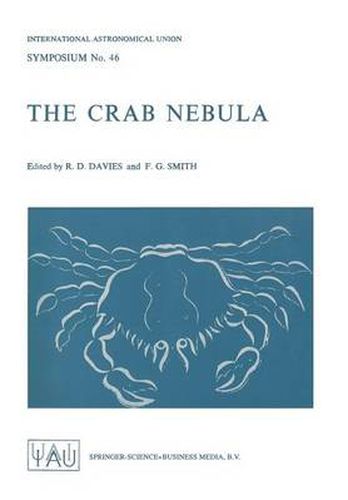Readings Newsletter
Become a Readings Member to make your shopping experience even easier.
Sign in or sign up for free!
You’re not far away from qualifying for FREE standard shipping within Australia
You’ve qualified for FREE standard shipping within Australia
The cart is loading…






This title is printed to order. This book may have been self-published. If so, we cannot guarantee the quality of the content. In the main most books will have gone through the editing process however some may not. We therefore suggest that you be aware of this before ordering this book. If in doubt check either the author or publisher’s details as we are unable to accept any returns unless they are faulty. Please contact us if you have any questions.
The Symposium on the Crab Nebula was held in the University of Manchester from 5 to 7 August, 1970. The meetings on the first day were held in the Physics Department on the University campus, and on the second and third days at the Nuffield Radio Astronomy Laboratories, Jodrell Bank. The 4th Symposium of the International Astronomical Union, convened in the University and at Jodrell Bank fifteen years earlier (25-27 August, 1955), dealt with the entire subject of radio and radar astronomy. Now the subject matter of this 46th Symposium of the International Astronomical Union was confined to one single object. It is interesting to recall that even at the 1955 symposium the Crab Nebula figured prominently. In particular, J. H. Oort described the new measurements of the polariza tion of the light from the nebula and I. S. Shklovsky explained the light and radio emission in terms of the motion of relativistic electrons in the magnetic field of the nebula. No one could have foreseen the exciting discoveries of a decade later which stimulated the assembly of 172 participants to this 1970 Symposium. In addition to the lectures and discussions the visitors were able to tour the laboratories and telescopes at J odrell Bank to see the various researches in progress. The demonstrations included a real-time display on a cathode ray tube of the pulses from pulsar CP 0328 received in the 250 ft steerable telescope.
$9.00 standard shipping within Australia
FREE standard shipping within Australia for orders over $100.00
Express & International shipping calculated at checkout
Stock availability can be subject to change without notice. We recommend calling the shop or contacting our online team to check availability of low stock items. Please see our Shopping Online page for more details.
This title is printed to order. This book may have been self-published. If so, we cannot guarantee the quality of the content. In the main most books will have gone through the editing process however some may not. We therefore suggest that you be aware of this before ordering this book. If in doubt check either the author or publisher’s details as we are unable to accept any returns unless they are faulty. Please contact us if you have any questions.
The Symposium on the Crab Nebula was held in the University of Manchester from 5 to 7 August, 1970. The meetings on the first day were held in the Physics Department on the University campus, and on the second and third days at the Nuffield Radio Astronomy Laboratories, Jodrell Bank. The 4th Symposium of the International Astronomical Union, convened in the University and at Jodrell Bank fifteen years earlier (25-27 August, 1955), dealt with the entire subject of radio and radar astronomy. Now the subject matter of this 46th Symposium of the International Astronomical Union was confined to one single object. It is interesting to recall that even at the 1955 symposium the Crab Nebula figured prominently. In particular, J. H. Oort described the new measurements of the polariza tion of the light from the nebula and I. S. Shklovsky explained the light and radio emission in terms of the motion of relativistic electrons in the magnetic field of the nebula. No one could have foreseen the exciting discoveries of a decade later which stimulated the assembly of 172 participants to this 1970 Symposium. In addition to the lectures and discussions the visitors were able to tour the laboratories and telescopes at J odrell Bank to see the various researches in progress. The demonstrations included a real-time display on a cathode ray tube of the pulses from pulsar CP 0328 received in the 250 ft steerable telescope.